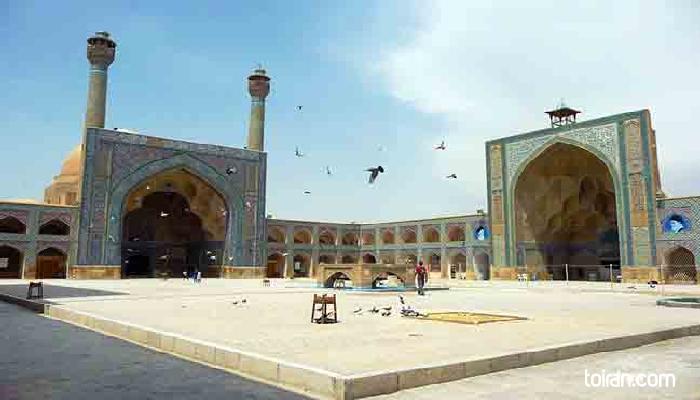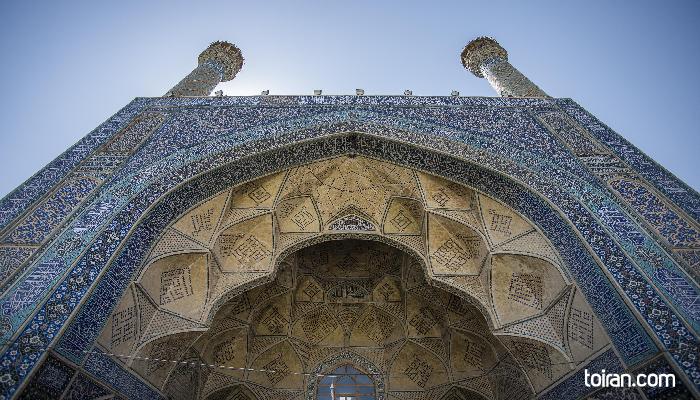One of the oldest and most important religious structures of Iran, the Jame Mosque of Isfahan is magnificent example of the evolution of mosque architecture as well as the development of Islamic arts over twelve centuries. The Jame Mosque is the embodiment of the aesthetic tastes of Persian rulers from the 8th through the 20th centuries.
The Isfahan Bazaar is located next to this mosque and the Qeisarieh entrance connects it to Naqsh-e Jahan Square. This enormous mosque located in the old texture of Isfahan city, was not just a place for worship, as it facilitated public mobility and trade activity with its many entrances that led to a network of passageways on all sides.
Archeological findings suggest that the mosque was built over the ruins of a Sassanid (226-651 CE) Fire Temple during the Buyid era (934 - 1062). After the Seljuq conquest (1038-1118) when Isfahan became the capital of the new empire, much importance was placed on embellishing the city’s Jame Mosque. When a fire damaged the mosque, a new four-iwan plan was given to the mosque during reconstruction efforts, making it the first Islamic building to adapt the four-courtyard layout of Sassanid palaces to Islamic religious architecture.
This 8th century mosque, which has influenced mosque construction throughout Asia, has gone through several remodelings. Additions and alterations were made to the Jame Mosque during the Ilkhanid (1256–1335), Timurid (1370–1507), Safavid (1501-1736), and Qajar (1785–1925) eras.
Unlike its simple brick exterior, the interior of the mosque has intricate stucco reliefs as well as lavish brickwork, tilework, moqarnas and mo’arraq decorations.
In the Safavid era, Shah Abbas I (1571-1629) had polymath Sheikh Baha’i (1547- 1621) design the Imam (Shah) Mosque or Jame Abbasi Mosque in Naqsh-e Jahan Square to replace this mosque as the new venue for the Friday Prayers.
The original Mihrab (prayer niche) of the Jame Mosque has inscription bands dating mainly from the time of Shah Tahmasp (1514-1576) and Shah Abbas II (1632- 1666). These inscriptions catalogue renovation and decoration efforts, and praise the 12 Shia Imams. There are also Quranic inscriptions praising the power of God.
The Oljaytu Mihrab in the northwestern part of the mosque, which dates back to 1310, was an addition made by this Ilkhanid ruler. This Mihrab is notable for its delicate stucco reliefs featuring 3D inscriptions, floral motifs and geometric shapes.
The Jame Mosque of Isfahan is a UNESCO World Heritage Site.














مسجد جامع اصفهان خیلی زیباست. با وجود مساجد زیادی که در اصفهان هست این مسجد بسیار حرف برای گردشگران دارد